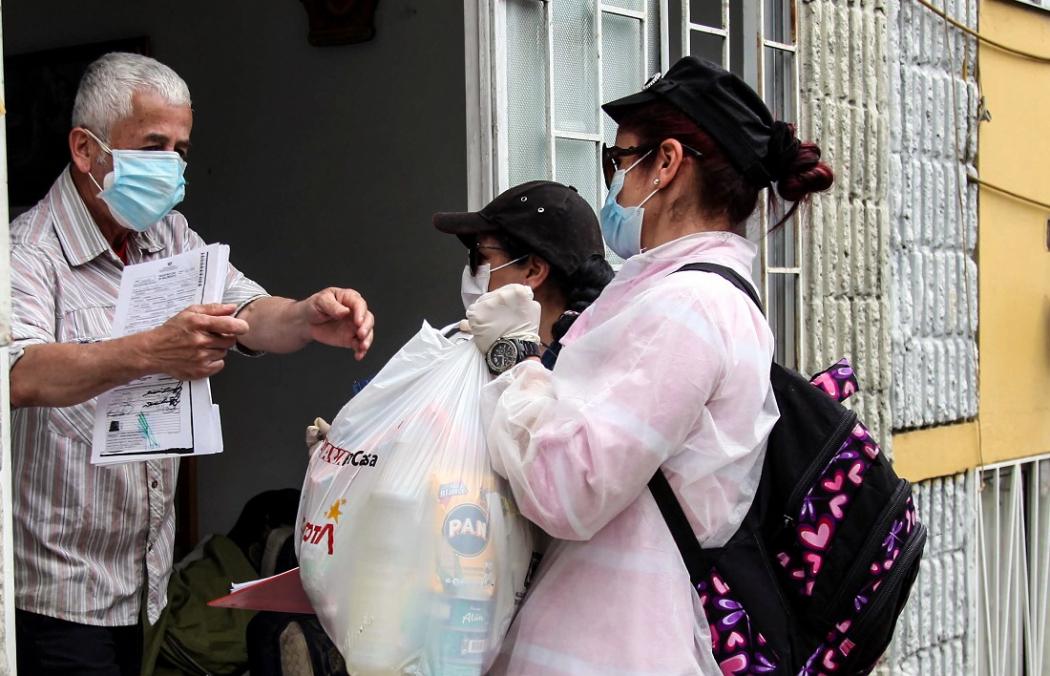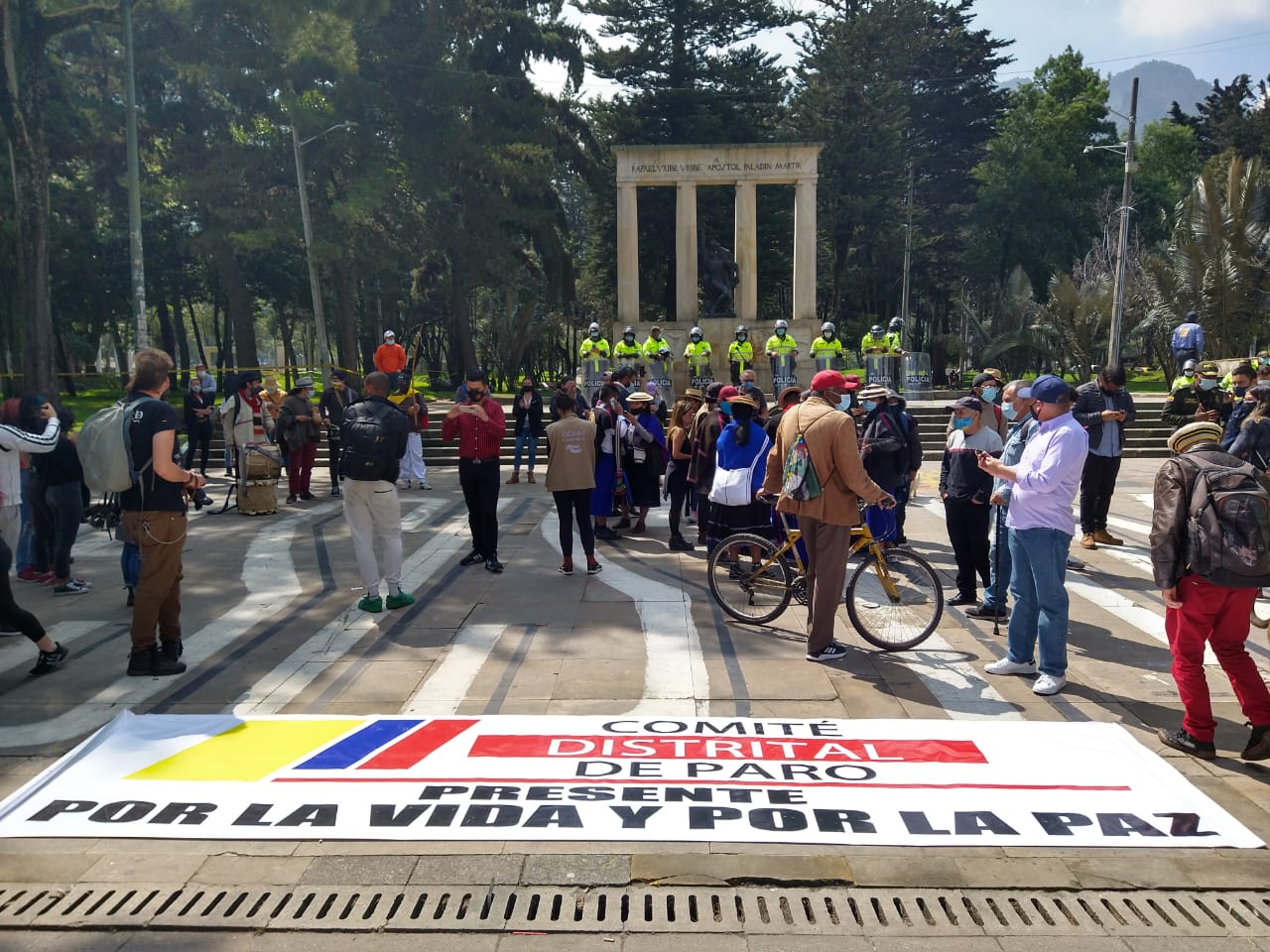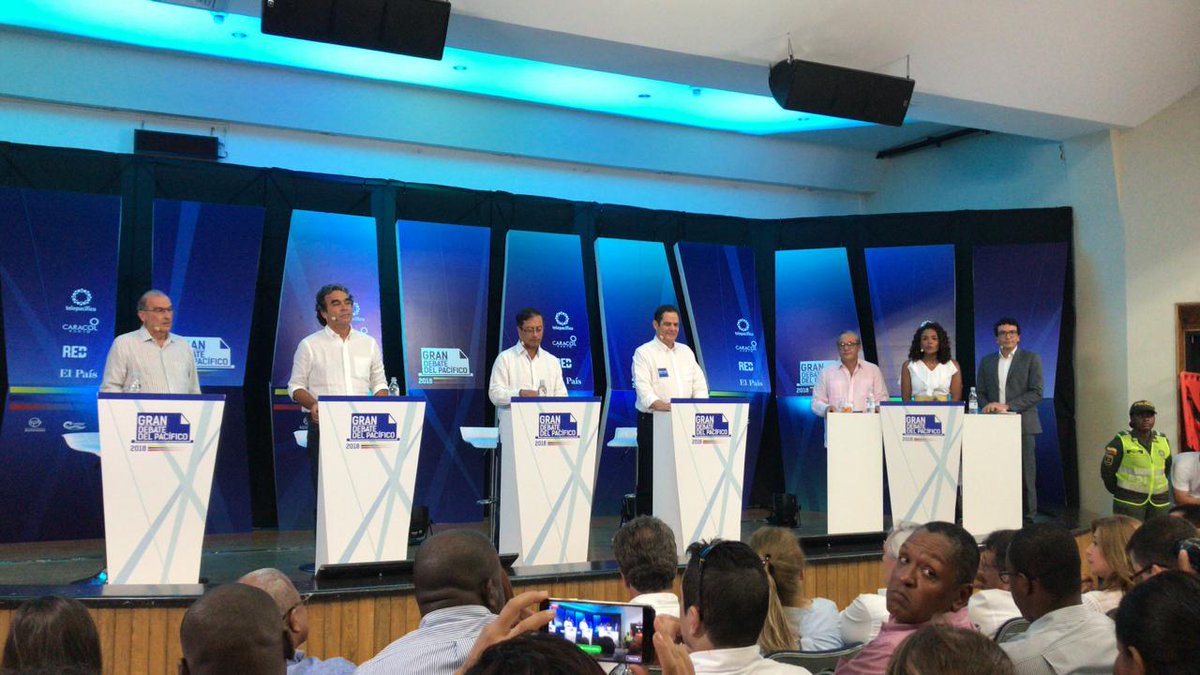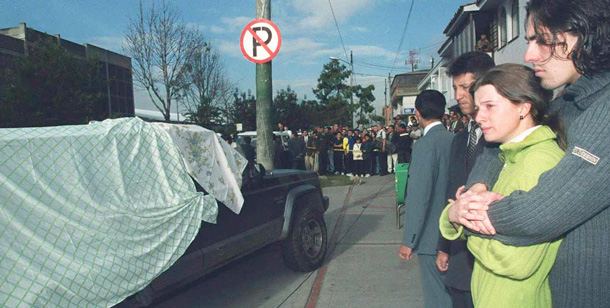Telecom giant paints the Bogotá pavements as part of a campaign to keep networks intact.
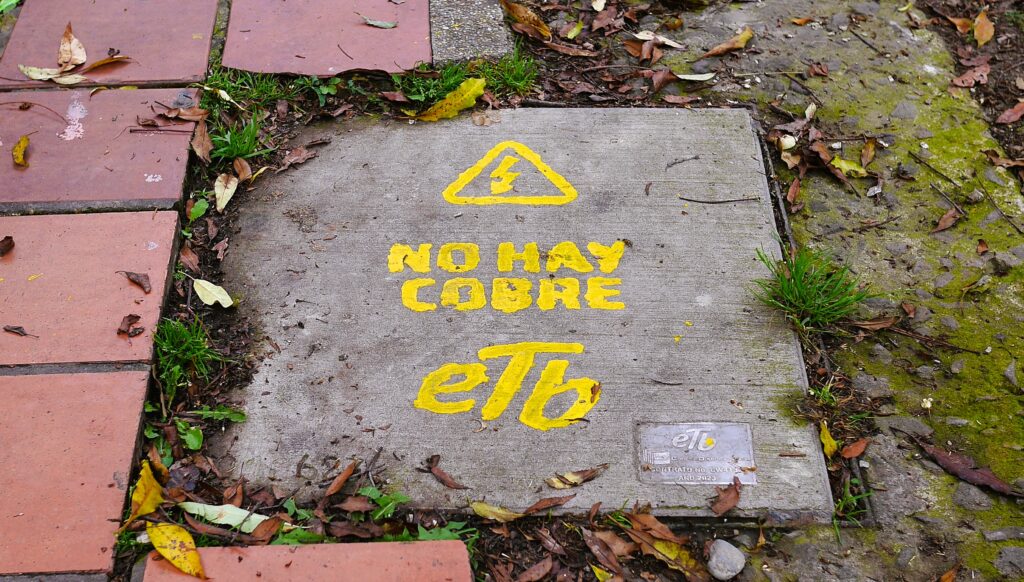
To combat rampant cable theft in Bogotá, telecommunications company ETB has come up with a surprisingly low-tech solution: spray painting “There’s No Copper” on manhole covers across the Colombian capital.
And, perhaps more surprisingly, this simple fix has arisen from interactions between the company – which manages a large chunk of the city’s phone and internet network – with the very street people who steal the cables.
“We approached those who were sometimes involved in these acts: the homeless,” company president Diego Molano told Colombian newspaper El Tiempo this month.
“We decided to delve into the problem, not just from a technical perspective, but from a human perspective,” he said.
Cable theft has skyrocketed with the global demand for copper, with Bogotá street recyclers now getting US$8 per kilo from a shady scrap industry ready to melt stolen metal into ingots for export. Much of that copper is stripped from wires carrying vital communications across the city,
The scale of the problem is seen in official export data, according to figures provided by ETB; in 2024 Colombia produced US$112 million worth of copper from its one copper mine. But miraculously exported US$ 630 million of the valuable metal. Go figure.
Switch to fiber-optic
To combat the problem telecoms companies have been in a race against time to swap out copper lines for fiber-optic cables, which have less commercial value to recyclers, meanwhile fighting a rearguard action to secure Bogotá’s vast network of cabling that runs underground but can be accessed by manhole covers.
In 2024 ETB installed 10,000 kilometers of fiber-optics in the city with a team of 700 engineers, and late last year declared the first district, Puente Aranda, “100% fiber optic”.
The thefts persisted in 2025 though largely because many street people lacked the understanding that the cables were now of no value. In the hope of finding copper, they ripped them out anyway. Data showed that 85% of these crimes were committed by homeless people or recyclers.
Hence the campaign with street people to educate them on the differences between copper and fiber cables. And from these interactions, supported by the city’s Secretariat of Social Integration, arose the idea of painting the inspection covers with “no copper” messaging (or “No hay cobre” in Spanish) as a reminder.
Capitolio cut off
Education has been backed by an aggressive policing plan against what city chiefs call “the Copper Cartels”, partly prompted by Colombia’s seat of government, the Capitolio Nacional, having its own wires snipped even while the country’s lawmakers were in session.
A senate report from last year detailed how copper prices had risen to US$11,000 a ton in 2024 sparking a rise in thefts. It also highlighted that vulnerable people living on the street who took the wires were just the lowest rung of a higher criminal ladder, and recyclers often stigmatised even while the majority play a vital role in Bogotá’s rubbish collection.
Senator Didier Lobo of the Radical Change Party, and second vice president of the Senate, said at the time that “those committing this crime are not individuals who do so for a living, but rather cartels that finance third parties to commit crimes.”
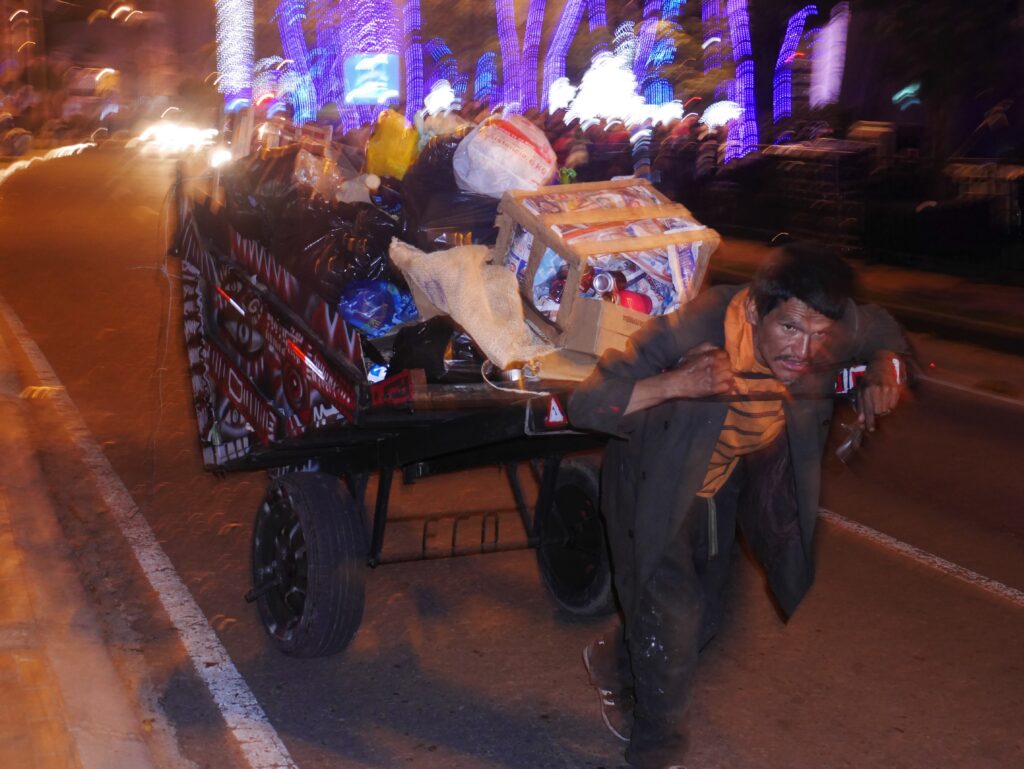
The senate also laid out the economic threats to the country, with small businesses as well as consumers facing frequent internet and data outages in recent years.
ETB data, reported in Portfolio, showed 70% of neighborhoods had suffered loss of connection, often lasting more than 12 hours. In 2023 that cable thefts affected 16,654 homes, businesses, and public entities with estimated economic losses of US$300 million.
Another astonishing figure, put out by ETB, was that 400 kilometers (250 miles) of cabling was stolen during 2023, roughly equivalent to the distance between Bogotá and Medellín.
A resulting security campaign, “Bogotá Conectada y Segura” (Connected and Safe Bogotá) headed by the city council but working closely with telecommunication companies, encouraged the public to quickly denounce suspicious activities to a city hotline even while engineers replaced the copper cables.
Copper free barrios

The strategy seemed to work. After a peak in 2023, with 3,275 cases of cable theft reported by ETB, the figure dropped to 1,208 last year. So far in 2025 there have been weekly reports of cable theft being thwarted by prompt police action, with citizens also quicker to dial in alerts to avoid being cut off.
Of course, criminals behind the trade have also adapted their modus operandi with news of the gangs disguised as ETB contractors attempting to enter street inspection hatches and remove valuable metals.
But as the copper replacement marches on and telecoms companies declare barrios “copper free”, and the yellow painted messages popping up all over the city, the hope is that Bogotá can at last achieve stable connectivity.
Of course, the question remains where the scrap metal merchants might turn their attention next: overhead electrical cables are already under threat, with energy company ENEL reporting six kilometers (four miles) of wiring stolen in the city in just five months last year.
And in leafy Teusaquillo in central Bogotá this week, casual inspection of overhead cabling showed many cut and stripped and hanging down to street level, perhaps a sign of problems to come. There’s a chance the Copper Cartels are not done yet.

